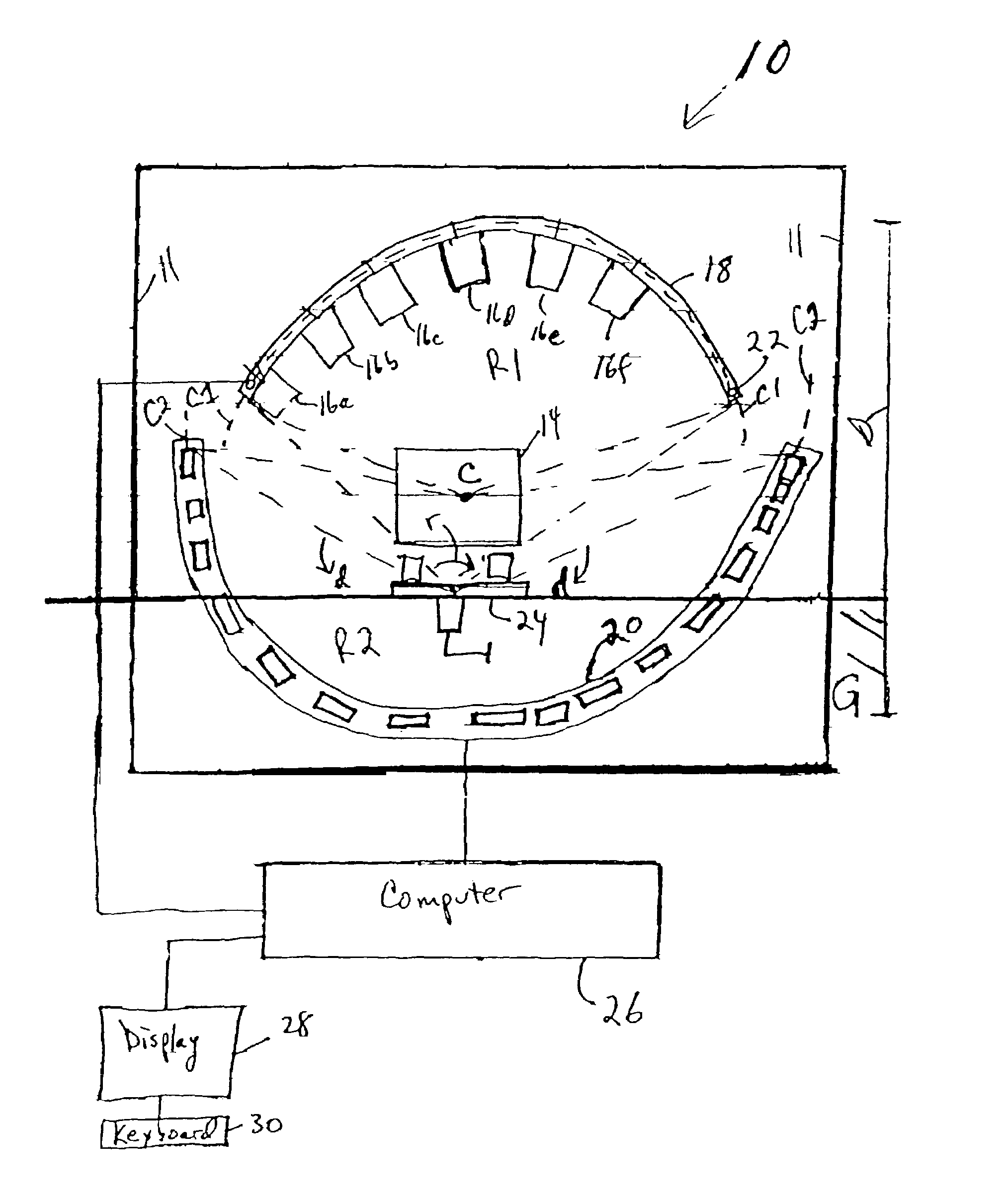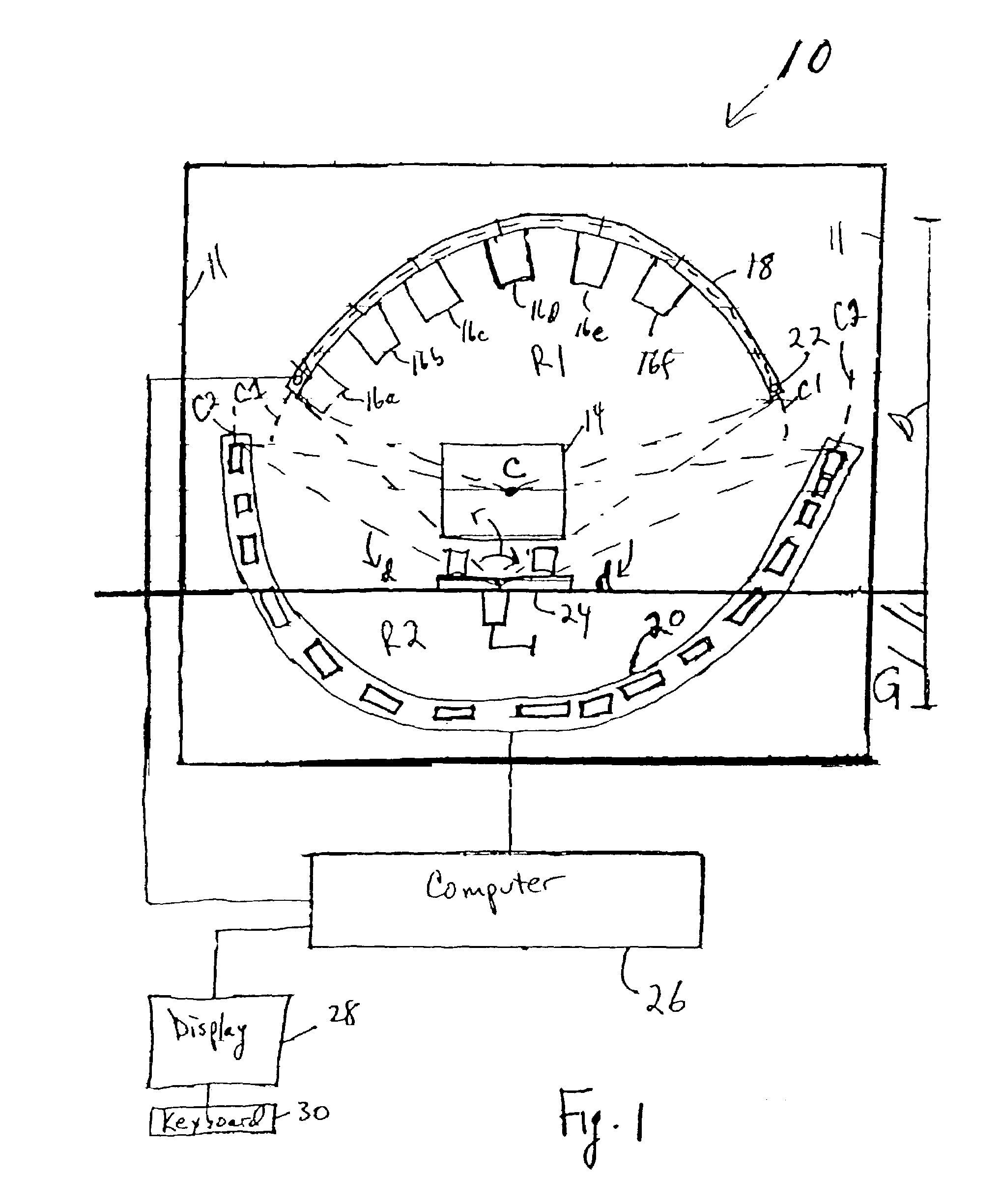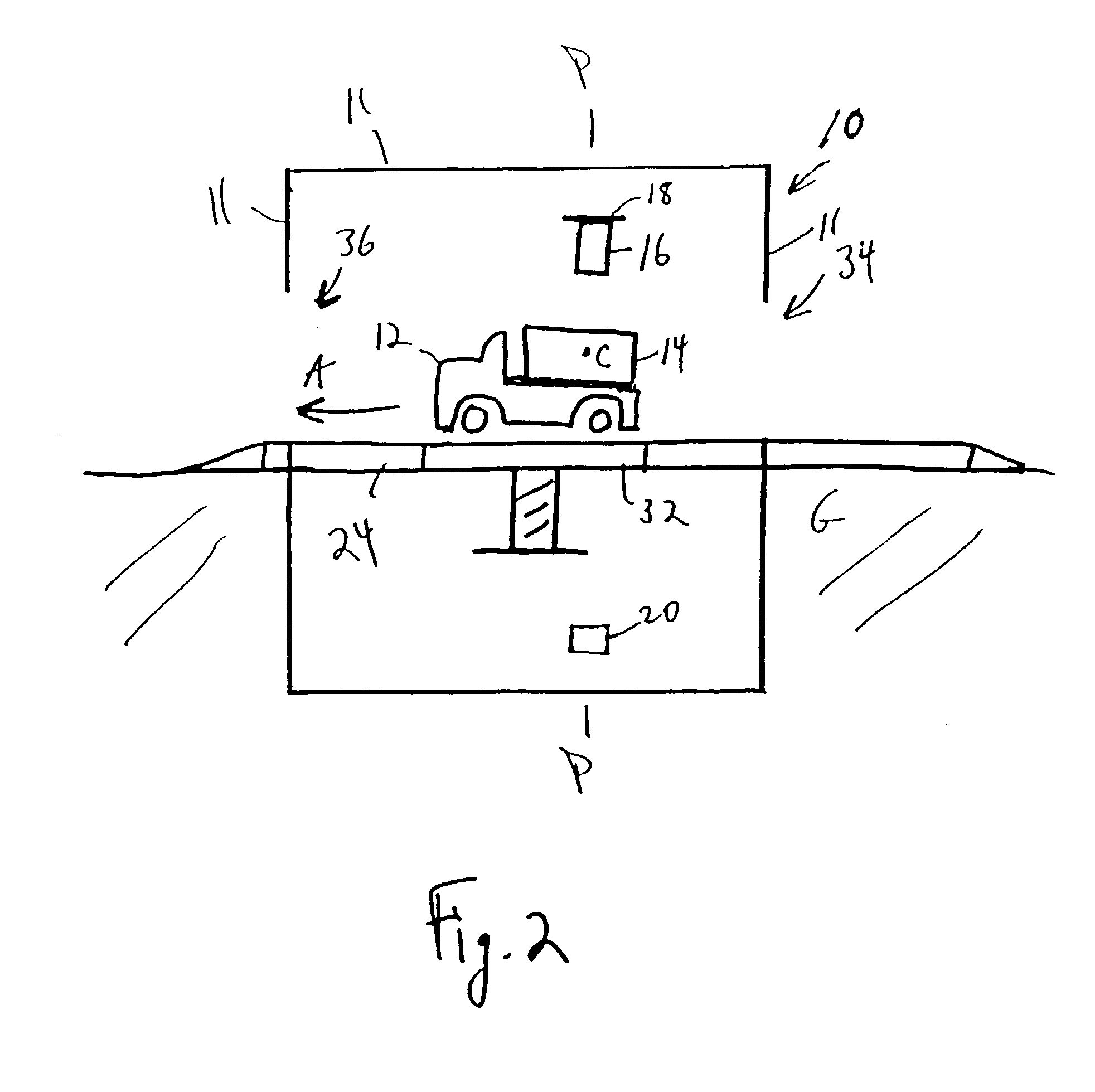Radiation scanning of objects for contraband
a technology of object radiation and contraband, applied in the direction of material analysis, application, material analysis using wave/particle radiation, etc., can solve the problems of difficult to distinguish between, difficulty in identifying dangerous items, and difficulty in identifying thin sheets of explosive materials
- Summary
- Abstract
- Description
- Claims
- Application Information
AI Technical Summary
Benefits of technology
Problems solved by technology
Method used
Image
Examples
Embodiment Construction
[0038]FIG. 1 is a front schematic view of an interior of a cargo scanning unit 10 for inspecting objects for contraband, such as explosive devices and materials, in accordance with one embodiment of the invention. FIG. 2 is a side schematic view of the center of the interior of the cargo scanning unit 10. The objects can be small objects, such as luggage and bags, or large objects, such as cargo containers. The scanning unit 10 comprises shielded walls 11. In FIG. 1, a truck 12 carrying a cargo container 14 is shown moving through the scanning unit 10, out of the page, along a first path. In FIG. 2, the direction of the first path is indicated by arrow “A”.
[0039]In this embodiment, the scanning unit 10 comprises six X-ray sources 16a–16f, a rail 18 supporting each of the X-ray sources 16a–16f and a detector 20. The detector 20 may be a detector array comprising a plurality of detector modules 21, as shown in FIG. 3, for example. The rail 18 and the detector array 20 lie along the sa...
PUM
 Login to View More
Login to View More Abstract
Description
Claims
Application Information
 Login to View More
Login to View More - R&D
- Intellectual Property
- Life Sciences
- Materials
- Tech Scout
- Unparalleled Data Quality
- Higher Quality Content
- 60% Fewer Hallucinations
Browse by: Latest US Patents, China's latest patents, Technical Efficacy Thesaurus, Application Domain, Technology Topic, Popular Technical Reports.
© 2025 PatSnap. All rights reserved.Legal|Privacy policy|Modern Slavery Act Transparency Statement|Sitemap|About US| Contact US: help@patsnap.com



